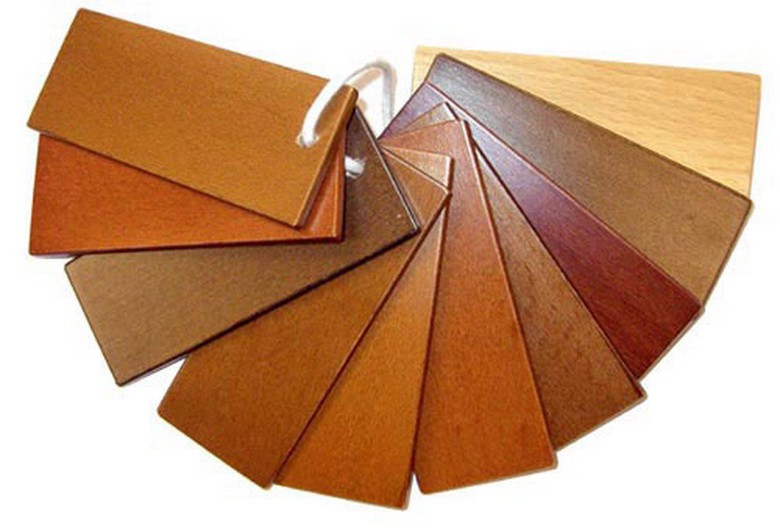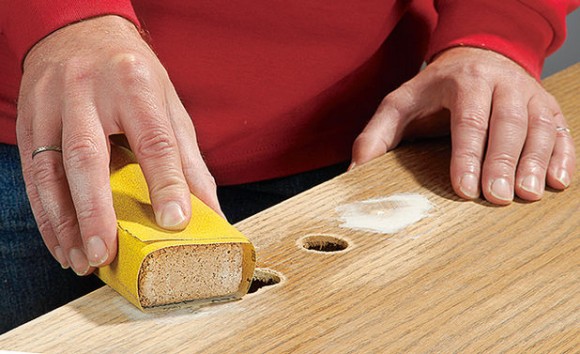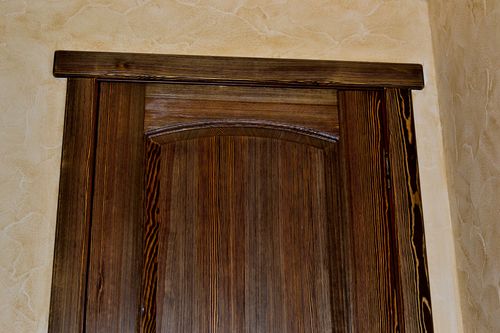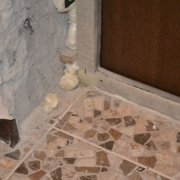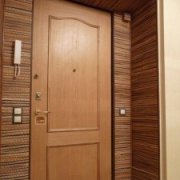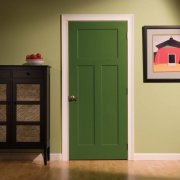How to paint interior doors correctly
What color to paint the interior doors, many people think at the time of repair. After all, the entire interior should be harmonious. And just as we will paint interior doors, we will consider today.
In this matter, it is important to initially determine their appearance. After all, there are many finishing options and this will help the photo and video in this article.
The content of the article
Painting interior doors
There are many different compositions for painting wooden surfaces (see What paint is better to paint a tree: we make a choice) First of all, it is necessary to determine what paint to paint the interior doors. After all, it is different in its composition and characteristics.
It can be a dense saturated layer. But if you wish, you can apply a thin transparent layer and simply emphasize the structure of the wood. Everything can be done with your own hands and the final price will not scare you.
How can I paint the doors
To create a good coverage, you need to choose a composition, and this is up to you personally.
In this question, you need to understand what coverage you want to see:
- Creates a dense, opaque coating. These are thick enamels and paints with a base of liquid acrylic, polyurethane, perchlorovinyl. Also in this group are fairly rare, obsolete oil-based compounds.
- Tinting compounds. These are various impregnations, penetrating deep into the layers of the tree, and not only giving it a certain shade, but also protecting it from destructive external influences.
- Transparent coatings. These are various varnishes, both glossy and matte, which cover the surface of the wood with a transparent layer that protects the wood from moisture.
For home use, professional painters recommend the use of easy-to-apply formulations, such as:
- Water based acrylic dyes. They have the best consistency for brushing, good adhesion and excellent covering ability. Acrylic paints only slightly inferior to oil paints in their surface spreadability, which is another plus of these coatings.
- Alkyd based paints and varnishes. They dry quickly, are not affected by temperature fluctuations, and repel liquids well, protecting the wooden surface.
Attention: The second option (alkyd paints and varnishes) are best suited for painting bath and kitchen doors.
Due to the high protective properties of these compounds, the wood will last much longer and will remain in its best form. In addition to entrance doors, alkyd dyes can be used to paint interior doors in interior rooms.
- It should be noted that for best adhesion all paints based on alkyd resin Apply only to a carefully wiped surface. If this condition is not met, the top layer of paint will become covered with bubbles, and over time it will begin to peel off.
Painting a wooden door is carried out in several stages:
- Very often, several formulations are used. First of all, the door is cleaned of old paint (see How to wash off the paint without problems), then coated with a primer. Sometimes it is necessary to primer repeatedly if the first coat is uneven.
- Then the door leaf is stained. If it is possible to remove the door from the hinges - it is painted in an upright position.If the door remains in place, then coloring begins from above. Large flat panels are coated with paint using a roller (see Paint rollers: consider in detail), small details are treated with a brush.
- In order for the coating to spread evenly, the layers are dried and the result is evaluated. If necessary, the staining is repeated so that the paint lies evenly. Too thick layers of wet paint should be avoided as they slide down, spoiling the appearance of the surface.
Door painting steps
In addition to the door itself, it is usually necessary to color the jamb, door stock and hinges. In order to evenly paint all parts, it is better to remove the door from the hinges. After that, all the details of the door frame are painted, and dried for the required time.
The door leaf can be dug with paint in two ways:
- The door leaf is removed and taken out into the open air, where it is painted. Painting work on the internal surfaces of the premises must be done in the summer, so that it is possible to ventilate.
- The door leaf is not removed, but lifted by means of wedges, move it away from the jamb so that it is possible to remove all the elements with a thin brush.
When the work is finished, you do not need to get the wedges, otherwise the inner edges of the door come into contact with the door stock, the paint will be smeared.
It is not always possible to remove the door. Sometimes there are designs with fixed hinges, handles, door locks. If they cannot be dismantled, then you can carefully glue them with paper tape.
Preparation of a wooden surface
The wooden surface must be thoroughly prepared before painting. It will take some diligence and accuracy to achieve a good result.
Cleaning a wooden surface is carried out in several stages:
- The first step is the complete removal of paint. Nothing from the previous coating should remain on the surface. In order to make the paint easier to peel off, the surface is coated with a special composition that reduces the adhesion between it and the surface of the wood. Residues are removed with a spatula and sandpaper.
- Another way to remove paint is to use a grinder. When using it, you must follow all safety rules, and wear a face mask. On the working surface of the machine, sandpaper with coarse grain is installed.
Heating also allows you to effectively remove paint. The surface of the door leaf is heated with a construction hairdryer. When bubbles appear, they are opened, and paint is removed in layers from the surface being cleaned.
- The second stage is grinding. This processing method allows you to remove small scratches, scuffs, as well as pieces of paint. You can grind in different ways, manually, or with sandpaper.
- The third stage is putty (see Hard putty on wood: how to do it wisely) You need to choose a special composition for wood, which has a fine-grained structure. If the door is covered with a transparent composition, it is necessary to select a putty in the tone of the surface, or paint it with special dyes. When processing, you should pay close attention to all minor scratches and surface damage, especially in hard-to-reach places.
- The fourth stage is finishing polishing. It allows you to bring the surface "to zero", perfectly aligning it and all the details of the decor, if they are present on the surface of the door. It must be remembered that the last grinding is done very delicately using fine-grained sandpaper. After doing all the work, the surface is thoroughly wiped from dust and working debris with a dry rag.
Caution: If the dents are too deep, regular putty may not hold well. It can be replaced with a car without fiberglass.
An old darkened solid wood, under a dense layer of paint or varnish, is easy to lighten.Chlorine bleach diluted in water in a ratio of 1: 3 is needed.
Coloring without applying various effects
The purchase of materials directly depends on the number of doors that need to be painted. If there are less than two, it is unprofitable to buy a sprayer, you can do with an ordinary paneled brush.
For large flat paintings without decorative elements, it is better to take a roller. Before painting, the brush must be fluffed well so that loose hairs can fall out before painting.
The type of door determines the method of painting:
- Painting the panel door will take a little time. It is painted in three steps. Since it has a flat surface, you need a roller. The coating is first applied from all ends, then the entire fabric is stained, starting from the upper left corner, and direct the movement to the side. The next layer is applied at right angles to the first, the finish - the same as at the beginning.
- Doors with a complex surface are painted only with a brush. All protruding elements, recesses, wooden carvings and patterns are stained, then even surfaces along which you can pass with a roller.
How to cover a door with a stain
Before staining with a stain, the door is moistened, so the wood increases its adhesion, and the coating is better absorbed and evenly lays down.
- All horizontal surfaces are painted with stain along the fibers, then transversely, and the last time - again along the fiber.
- The jambs, the door frame and the canvas begin to cover with a transparent stain or varnish from bottom to top, and with opaque compositions from top to bottom.
- After treating the wood with a water-based stain, the wood fibers are straightened, and in order to level the surface, they need to be leveled with an emery-sandpaper. Then the surface is wiped with a dry cloth, and covered with a stain again.
Caution: The color of the surface after drying is much lighter than that of a freshly painted door. A darker color can be achieved by repeatedly covering the surface with a stain.
- To avoid the final grinding step, an alcohol-based stain should be selected.
Create wood imitation
On almost any surface, you can create an imitation of wooden fibers.
To do this:
- The woodwork is painted with light paint of natural shades;
- Then the dried surface is covered with liquid soap with a brush;
- A darker paint is applied on top of the soap, then the soap is washed off with water.
At home, you can create an imitation of veneered doors even on the surface of a plywood door. To implement this method, you will need a special brush, sold in hardware stores.
- It is necessary to “comb” the surface of the door leaf with its metal fibers, so that visible shallow grooves appear on it.
- The surface is stained with contrasting dyes. After drying, patterns characteristic of natural wood appear on the surface.
How to repaint interior doors you now know. And following the basic rules, you can learn to paint and decorate any wooden surface. This will not be very difficult.
Having trained at the doors, in the future it will be possible to restore more complex interior items - cabinets, tables and sideboards. Instructions for painting and decorating all types of doors are on our website.

